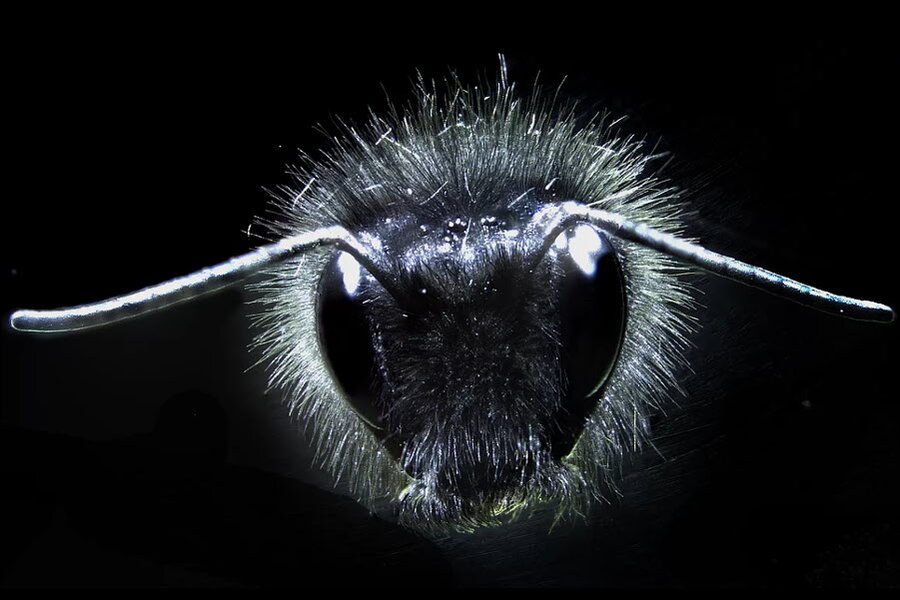Do a bumblebee's hairs talk to the flowers?
Loading...
Bees play a crucial role in pollination, integral to the functioning both of natural ecosystems and to the sustainability of our crops. As such, the relationships between these insects and the flowers they pollinate are of vital interest. How how do bees and blooms communicate with one another?
One of the many methods used to facilitate bumblebees' recognition of particular flowers turns out to employ electric fields, something usually believed to be confined to the aquatic world, according to researchers from Bristol University in England.
Their research, published Monday in the journal Proceedings of the National Academy of Sciences (PNAS), drilled into the mechanisms involved and discovered that the unique electrical signatures emitted by a given flower are detected by the fuzzy hairs that blanket bumblebees' bodies – and considering that similarly light, bristly hair covers so many creatures, the ability may be widespread in the insect world.
"When I first started studying this I had a very naïve question," lead author Gregory Sutton, a Royal Society university research fellow at Bristol University, tells The Christian Science Monitor in a phone interview. "Why do flowers look so different to one another?"
Surely all flowers would converge towards the one shape, scent, color – and any other characteristic you care to mention – most attractive to the pollinators? Except that this reasoning neglected an important factor: Flowers don't aim just to attract a given pollinator. They want that pollinator to stick around, to lock them into a monogamous relationship.
So, with the dazzling diversity of flowers on display in the plant kingdom, it takes a bee some time to figure out how best to extract the nectar it seeks from a given type. Once it conquers one, a bee would be reluctant to expend all that energy investigating others.
Take mint, for example.
"Have you ever had mint honey?" asks Dr. Sutton. "Well, you don't just mix mint into honey; turns out it's icky. Instead, you just put a small mint plant in front of a hive, make sure it's the first one they encounter."
And what happens? The bees will then seek out all the wild mint plants in a five-mile radius, making honey out of mint.
In order to foster that critical relationship between a given flower and the bees, it's crucial that each flower communicate its identity, in as many ways as possible. They use a plethora of methods: not only color, shape, and scent, but subtler ones, too, such as patterns visible only in ultraviolet light, or opening at certain times of day – and their electric fields.
Electro-receptivity is nothing new in the animal kingdom, but most of the time it is found in a wet environment, where special receptors – usually called ampullae of Lorenzini – detect minuscule electric currents wafting through the water.
Initially, the researchers postulated that the bees were using their antennae, organs replete with an array of sensors. But it turned out that, while the antennae did respond to an electric signal, the signal was relayed no further.
"So, we looked at the big fuzzy hairs on the bumblebees: They're so fuzzy!" Sutton tells the Monitor. "If you put the hairs in an electric field, the hairs move a lot more than the antennae."
More than that, the scientists detected a reaction to the electrical signal at the base of the hairs, a signal being transmitted. No other part of the bee responded in the same way.
"The thing I find most exciting about all this is if you look at how sensitive the body hairs are to motion, they're not that sensitive," says Sutton. "Spiders, for example, are covered in sensory hairs that are crazy sensitive. So this mechanism of using tilting body hair to measure electric fields could be a ubiquitous thing in the insect world."






